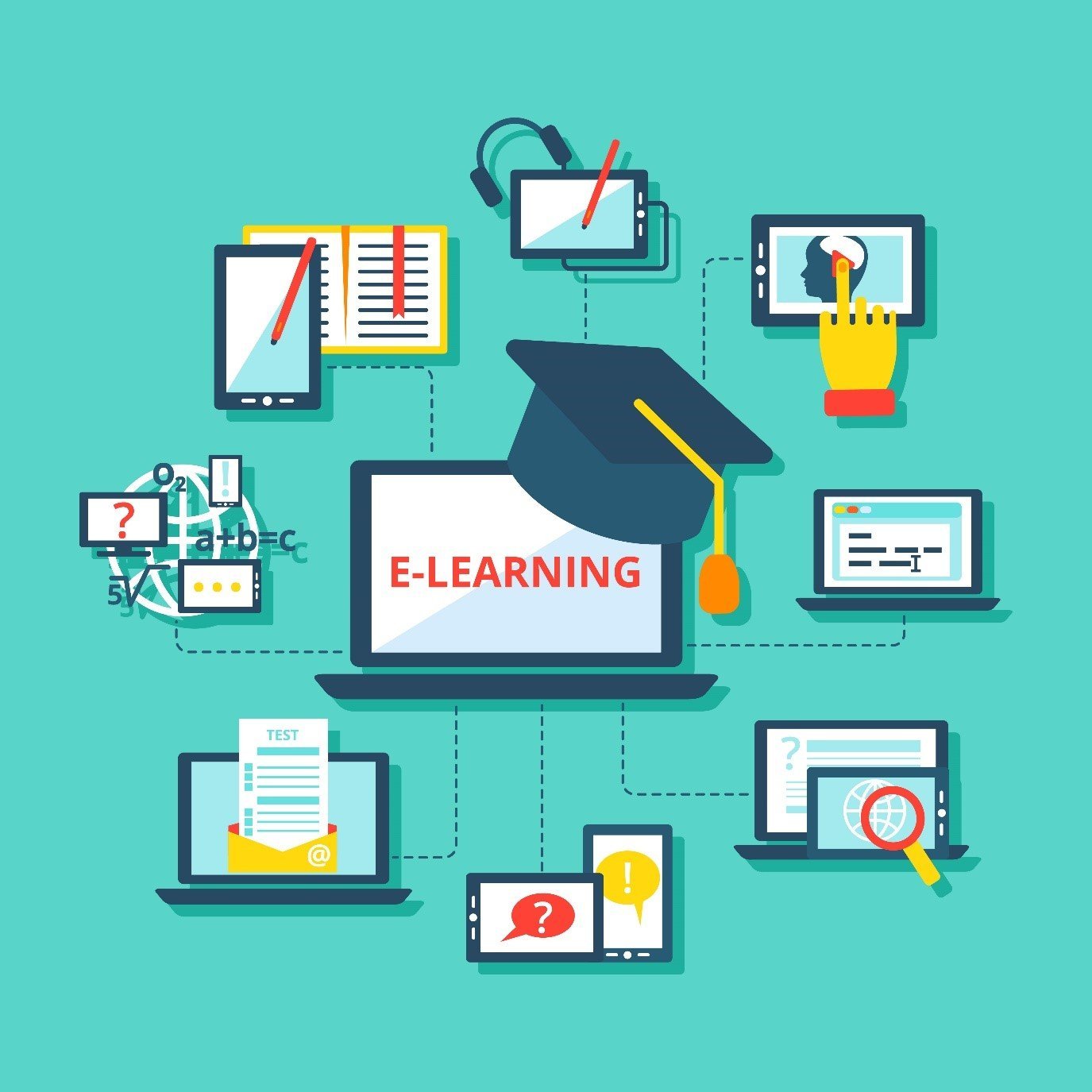The increasing demand for e-learning courses in recent years has created a tidal wave in education due to their high convenience and accessibility. They have facilitated the way we learn and gain knowledge immensely, especially after the covid-19 pandemic situation which accelerated the need to shift to online education.
E-learning courses have given the chance for businesses to train their employees and improve their professional skills in a more affordable and faster way than attending traditional classes. However, what if your business operates in other countries and you need to train employees who speak different languages? Here comes the importance of e-learning translation services.
In this blog post, you will have an overview of what e-learning is, and its benefits for businesses and find out some of the best practices you should follow when you decide to translate your e-learning courses into multiple languages. Read on to learn more!
What Is E-learning?
E-learning is the utilization of digital resources to make learning and training available online. E-learning courses can be easily accessed using computers, tablets, or smartphones with a stable internet connection. This enables learners to learn and gain knowledge anytime and anywhere without any pressure or restrictions.
E-learning courses first appeared in the form of digital courses and software programs and have been developed into platforms and applications.
In today’s world, companies find e-learning courses a great way to train their employees, enhance both their personal and professional skills, or even prepare them for a new promotion while saving at the same time a lot of costs that they may have spent on renting places for training or paying traveling expenses. Employees can access the courses in their spare time and can get back to learning materials any time they prefer.
Here are some of the benefits of e-learning courses for businesses:
Breaking the Barriers of Time and Place
With digital learning or e-learning, you can train and educate hundreds of employees at different locations since they can access the courses anytime and anywhere. They do not have to travel to distant places or attend classes to gain knowledge. They are free to access the courses anytime at their own pace.
Saving Costs
E-learning courses save you a lot of costs that you may spend on courses in training centers or institutions. Some businesses send employees to other countries for professional development purposes. This costs them large amounts of money since they have to pay for tickets, hotels, and other travelling expenses. E-learning courses enable employees to learn freely without having to be restricted by a specific time and place.
Tracking Employees’ Progress
E-learning courses and particularly the new advanced applications and platforms help you track the progress of your employees easily. All you need to do is to access the system and you will receive reports on their development which helps you identify their strengths and weaknesses.
How to Make the Most Out of E-learning Translation Services?
Translating e-learning courses is crucial if you are an international company and have branches in many countries. Translation services help you make your training courses available for all your employees in different countries. However, how to ensure that the translated courses are as efficient as the original ones? Here are some important tips on how to properly translate e-learning courses to maintain the same quality and effectiveness as the original courses:
Analyze the Requirements of the Project
Before proceeding with the translation process, translators or the translation agency should decide the requirements of the project and study the target audience well. They should also decide the elements that should be localized and whether they will need to add captions or voiceovers. This is very crucial to make sure that the translated e-learning courses will be engaging and achieve the same effectiveness as the original courses.
Use Localization Services
Each language has its own linguistic and cultural nuances. Thus, you have to hire a professional translator who is a native speaker of the target language to address all the nuances of the language. Not only texts that should be localized, but also images, videos, and colors should be adapted to match the cultures of the targeted countries.
Utilize AI and Automated Translation Tools
Make sure that the translator or the language service provider you hire uses cutting-edge technological tools during the translation process. Such tools include machine translations, translation memories, glossaries, and quality assurance that guarantee the consistency, high quality, and accuracy of your translated courses.
Conclusion
Translating your e-learning courses is essential if you wish to cater to learners from different cultures and language backgrounds. Yet, you have to select the best translation services that keep the same level of engagement, reduce misunderstandings, and create a stimulating and inclusive learning environment.
At Afrolingo, we have professional teams of designers and translators that can work with different e-learning courses and platforms. We localize everything including all the multimedia content to give your target audiences the same interactive learning experience. Request a quote now!


